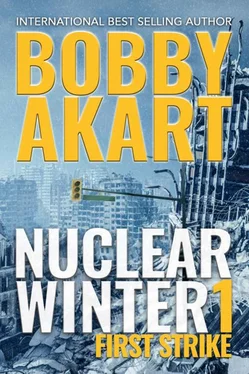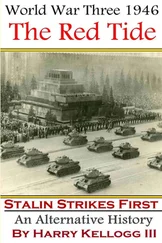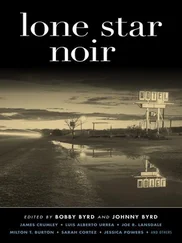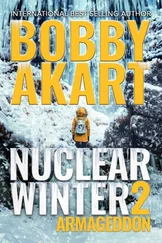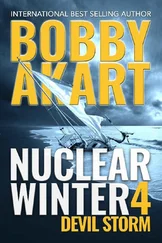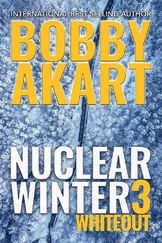Lacey turned the truck down the winding road that led back to their neighborhood. Traffic began to dissipate. They’d arrived at the wrought-iron security gates and entered the subdivision. Their neighbors were standing on their covered porches, commiserating with each other. A couple waved to her in an effort to have her join the conversation, but she continued home. Lacey had a single focus, and that was to make sure her husband was safe.
As soon as she parked the truck and began to open the garage door, Tucker jumped out and raced underneath the half-open door. She followed him shortly thereafter, and by the time he entered the hallway through the garage, he was shouting to her.
“Dad left a voicemail. He’s okay. He’s walking home. He got stuck on the bridge and just left the car. He thinks it might take him seven hours or so.”
“What time did he call?”
“Twenty minutes ago,” replied Tucker as his mom joined him in the kitchen.
She walked over to the junk drawer , as they called it. It was in the far end of their expansive kitchen counter. The junk drawer was the least useful for purposes of cooking but was ideal for filling up with notepads, pens, rubber bands, and just about anything else that didn’t have a regular, family-approved storage location. She pulled out a pen and paper.
“I’m gonna write him a note to let him know we’re safe. We’ll head down the ridge toward the Dumbarton to find him. I’m hoping we can connect by phone in the meantime, but just in case, he’ll know to stay here.”
Tucker grabbed a Red Bull for himself and a Cherry Coke Zero for his mom while she wrote out the note. Lacey was full of emotion as she wrote the final words—we love you. She wiped the tears off her face and nervously laughed at herself.
Tucker was leaning against the counter. He took a swig of Red Bull and stifled a belch.
“You’re such a girl, Mom.”
“Brilliant observation, son,” she said with a chuckle. “I’m just glad your dad is okay. Now, let’s go find him.”
Tucker handed his mom the can of soda. “Should we bring him some clothes?”
Lacey beamed. Tucker had more common sense and empathy than she’d had when she was a teen. Hank had taught her to be a boy, but her mom had raised her as a young woman. Tucker was all boy, yet he had flashes of maturity she hadn’t had growing up. She gave him a smile and darted up to their master bedroom to retrieve a gym bag, which she filled with jeans, a sweatshirt, socks and sneakers.
“Hey, Mom! Text messaging between phones is working again. It’s Dad. He’s at the Safeway on Decoto Road.”
“Tell him we’re on our way!”
Lacey raced down the stairs, two at a time, just like a boy.
Tuesday, October 22
Mount Weather Emergency Operations Center
Northern Virginia
The Mount Weather Emergency Operations Center was hidden away in the small community of Bluefield, Virginia, near the state’s border with West Virginia. It was one of America’s best-kept secrets as an unacknowledged continuity-of-government facility operated under the auspices of FEMA.
The two-hundred-thousand-square-foot facility, with multiple structures both above and below ground, encompassed a four-hundred-thirty-four-acre mountain site. Two hundred forty employees kept the lines of communication open between the high-level government officials buried deep underground and their counterparts around the world.
Based on a favorable evaluation of the hardness and integrity of the mountain’s rock by the Bureau of Mines in the 1930s, construction began on the facility’s tunnels in 1954, which was completed by the Army Corps of Engineers under the code name Operation High Point .
The billion-dollar facility included a system of tunnels with roofs shored up by iron bolts driven eight to ten feet into the overhead rock. The entrance was protected by a guillotine-style gate and a ten-foot-tall by twenty-foot-wide thirty-four-ton blast door that was five feet thick. It took almost fifteen minutes to open or close.
The underground bunker included a hospital, crematorium, dining and recreation areas, sleeping quarters, reservoirs of drinking and cooling water, an emergency power plant, and a radio and television studio, which was part of the Emergency Broadcasting System. A series of side tunnels connected with a total of twenty belowground office complexes, some of which were three stories tall. The East Tunnel included a computer complex for directing emergency simulations and wartime operations.
An on-site sewage treatment plant capable of processing ninety thousand gallons a day was coupled with two quarter-million-gallon aboveground storage tanks designed to support a population of two hundred for more than a month.
Although the facility was designed to accommodate several thousand people with sleeping cots, only the president, members of the cabinet, high-ranking military commanders, and Supreme Court justices were provided private sleeping quarters.
The president was told this might be an intermediary holdover until after the threat had passed. Based upon confirmed, active intelligence, he’d either return to the White House or be sent to Cheyenne Mountain, where he could better interact with his military commanders.
The planning of the president and the staffers who made up the White House operations team was timely, although complicated by the ballistic missile alert issued on the West Coast. The human side of the administration was safely tucked inside the bombproof bunker. However, the computers and files necessary to operate the government hadn’t arrived before the blast doors were forced to shut. The delivery trucks had been redirected to secure locations, and it wouldn’t be until the next day before their contents were delivered.
For the first time late that evening as midnight approached, the former Pennsylvanian who grew up in a coal-mining family got settled into the former Bureau of Mines property. He wasn’t sure if the false alarm was intentional or truly human error, as the young woman had professed to investigators. He tried to think through the events, especially the timing, to determine if there was a connection to the activities of his secret task force.
He couldn’t discern what the purpose might be. Why instigate a panic now when the possibility of actual nuclear retaliation by North Korea or China could come very soon? He shrugged off his own questions. He’d been assured by those he’d hand-selected for this job that their experience immersed in the inner workings of the DC bureaucracy would yield the result he sought.
The president insisted upon plausible deniability. When the time came to cross the Rubicon and pull the nuclear trigger, he needed to be shocked and disturbed that he, as president of the most powerful nation on earth, was forced to take such a dangerous, hostile action.
The term crossing the Rubicon was based upon an ancient event. In 49 BC, Julius Caesar prepared to cross the Rubicon River in present-day northeastern Italy during his quest to conquer Rome. To cross the Rubicon was a metaphor that meant to take an irrevocable step toward a risky or even revolutionary course of action. Many equate it with the more modern phrase passing the point of no return .
President Helton understood the risks and ramifications of his plan. It was calculated, to be sure, but also predicated on the counsel of the men and women who’d worked in Washington most of their adult lives. He felt certain their advice was sound, and because it comported with one of his unstated goals to accomplish as president, he likely downplayed the risks to suit his purpose.
Читать дальше
